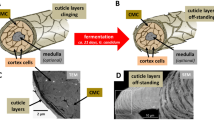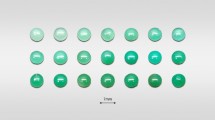Abstract
IN the course of the study of the lamb's coat of various breeds of sheep, a range of fibre forms has been recognised by Duerden and Dry. In this method of classification, the apparent thickness of the fibres is of great significance; but analogous to results obtained from work on crimp, it is now suggested that it may not be entirely ascribed to increase of cross-sectional area, but may be due to a twist of the fibre. Thus a thick or thin filament would appear according as the major or minor axis of the cross-sectional ellipse was seen. Prof. Duerden kindly supplied typical prototrichs from the fleece of a Blackface lamb aged 1 month.
This is a preview of subscription content, access via your institution
Access options
Subscribe to this journal
Receive 51 print issues and online access
$199.00 per year
only $3.90 per issue
Buy this article
- Purchase on Springer Link
- Instant access to full article PDF
Prices may be subject to local taxes which are calculated during checkout
Similar content being viewed by others
References
NATURE, 130, 736, Nov. 12, 1932.
Author information
Authors and Affiliations
Rights and permissions
About this article
Cite this article
BARKER, S. Fibres from the Coat of a Blackface Lamb. Nature 131, 799–800 (1933). https://doi.org/10.1038/131799a0
Issue Date:
DOI: https://doi.org/10.1038/131799a0
This article is cited by
-
Sickle-Fibres of the New Zealand Romney Lamb
Nature (1933)
Comments
By submitting a comment you agree to abide by our Terms and Community Guidelines. If you find something abusive or that does not comply with our terms or guidelines please flag it as inappropriate.



